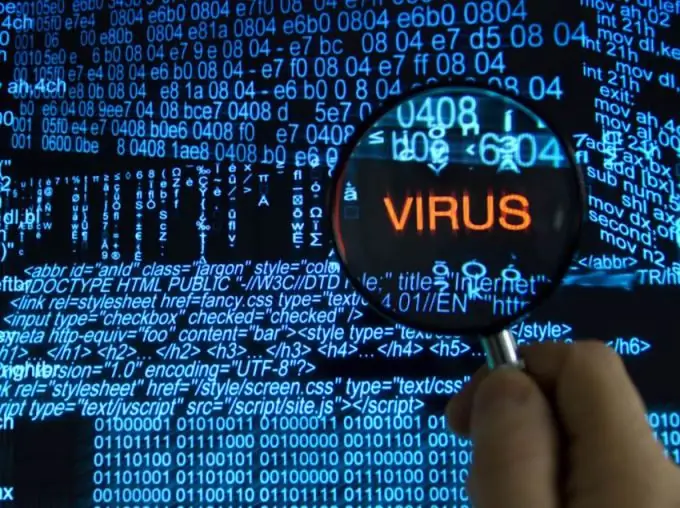- Author Lauren Nevill [email protected].
- Public 2023-12-16 18:48.
- Last modified 2025-01-23 15:15.
Internet surfing, even for experienced users, is full of dangers and surprises in the form of a variety of malicious programs. Not the least among them are ransomware viruses that block Internet access and require the owner of the infected computer to transfer money to a specific account.

These programs change the contents of the hosts file and register the addresses of third-party DNS servers in the properties of the Internet protocol. If, when you try to access any website, you see a message on the screen: “Access to the Internet is blocked. To unlock, enter your phone number and follow the instructions in SMS or something similar, run a full scan of your computer with an antivirus program.
Open the C: / WINDOWS / system32 / drivers / etc / folder and right-click (RMB) on the hosts file. In the drop-down menu, click "Open" with the left button and find "Notepad" in the list of programs. The main part of the file content is occupied by comments marked with #. The significant part for Windows XP should look like this:
127.0.0.1 localhost
If, besides her, there are some other entries that are not marked as comments, delete them and save the file.
For Windows 7 and older versions:
# localhost name resolution is handled within DNS itself. # 127.0.0.1 localhost #:: 1 localhost
To edit this file, right-click in the lower right corner of the screen and left-click on the item "Command line (administrator)". In the window that opens, enter the command C: / Windows / system32 / drivers / etc / hosts
and remove the extra lines.
Right-click on the network icon on the Desktop or in the tray (lower right corner of the screen). If you have Windows XP installed, left-click on the "Properties" item, then right-click on the "Local Area Connection" icon. Select "Properties" again and in the new window click "Internet Protocol (TCP / IP)". Click "Properties" and in the new window select "Obtain DNS server address automatically". Click OK.
For Windows 7 and higher, select Network and Sharing Center, then click the link on the right side of the window. It can be called differently: "Local Area Connection", "Wireless Connection" or something else. In the new window, click the "Properties" button and select "Internet Protocol Version 4" from the list. Click Properties again and select Obtain DNS Server Address Automatically. Confirm with OK.
Be careful when downloading files from unfamiliar resources. If while downloading music, a book or a movie you find an executable file (extension.exe,.com) or an installer, then with a high degree of probability you have downloaded a virus to your computer. Better not try to run it.






